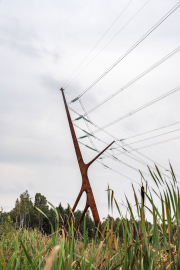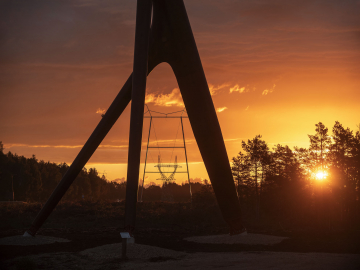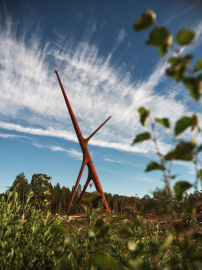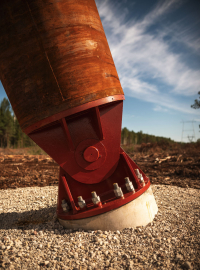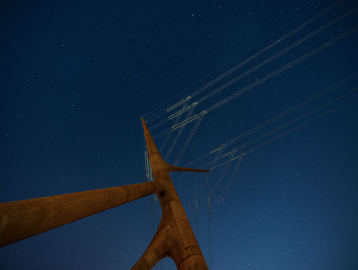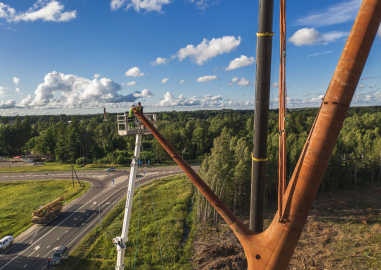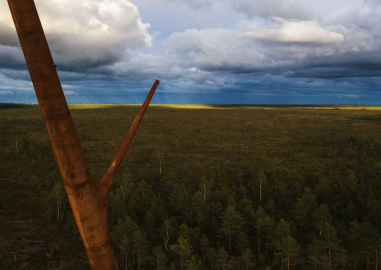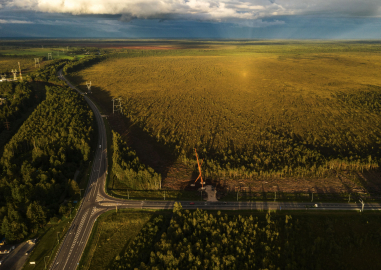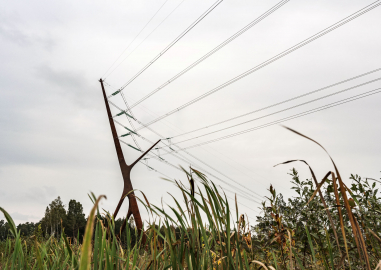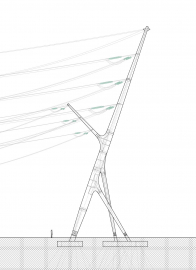Design pylon "Bog Fox"
The high voltage design pylon Bog Fox is a unique piece of infrastructural architecture. Combining local folklore, architectural design and infrastructural engineering, the Bog Fox has become a landmark for a holistic view on our living environment in Estonia.
The corner pylon is part of the third Estonian-Latvian electricity connection within the larger plan to join the Continental European power grid and frequency area. It is situated next to Risti borough in Marimetsa-Õmma Nature Reserve. This delicate situation called for a more refined approach to the design of the prominent pylon.
The Bog Fox has become a remarkable towering landmark of 45 metres at the so-called Risti intersection. Its branching form makes it unique from each side. Approaching it on the highway, it marks the visitor’s arrival at the border of Lääne County and the intersection of Ääsmäe-Haapsalu and Risti-Virtsu Roads.
Utilising digital tools and integrated design methods the expertise of architects, engineers and fabricators are combined into a synergetic design model to come up with the best solution. The design was based on simplicity. Its three legs and two branches are created by intersecting four lines. The length, direction and relative position of the axes stem from the geometric requirements set for power lines and the particular structural needs. Out of the algorithmic optimisation results, the most aesthetically pleasing form was selected. The profile cross-sections correspond to the changes in internal forces and thus create an aesthetically organic form with a minimum material cost. To emphasise the form, smooth transitions were created between the branches.
The Bog Fox weighs more than 30 tonnes while a regular lattice pylon would have weighed around 26-27 tonnes. As the safety coefficient of the structure is much higher for a design pylon than a tried and tested standard version, the Bog Fox design is actually structurally more efficient than a regular lattice pylon. It is strong – the force in its feet can reach up to 300 tonnes, the maximum diameter is 1.66 metres and maximum wall thickness 22 mm. The lifespan of a pylon is around 50 years but, in reality, definitely much longer. The first Estonian design pylon was manufactured in Romania and transported in 11 pieces on three trucks.
The weathering steel structure is a clean material that forms its own protective patina layer, which makes it completely maintenance-free.

